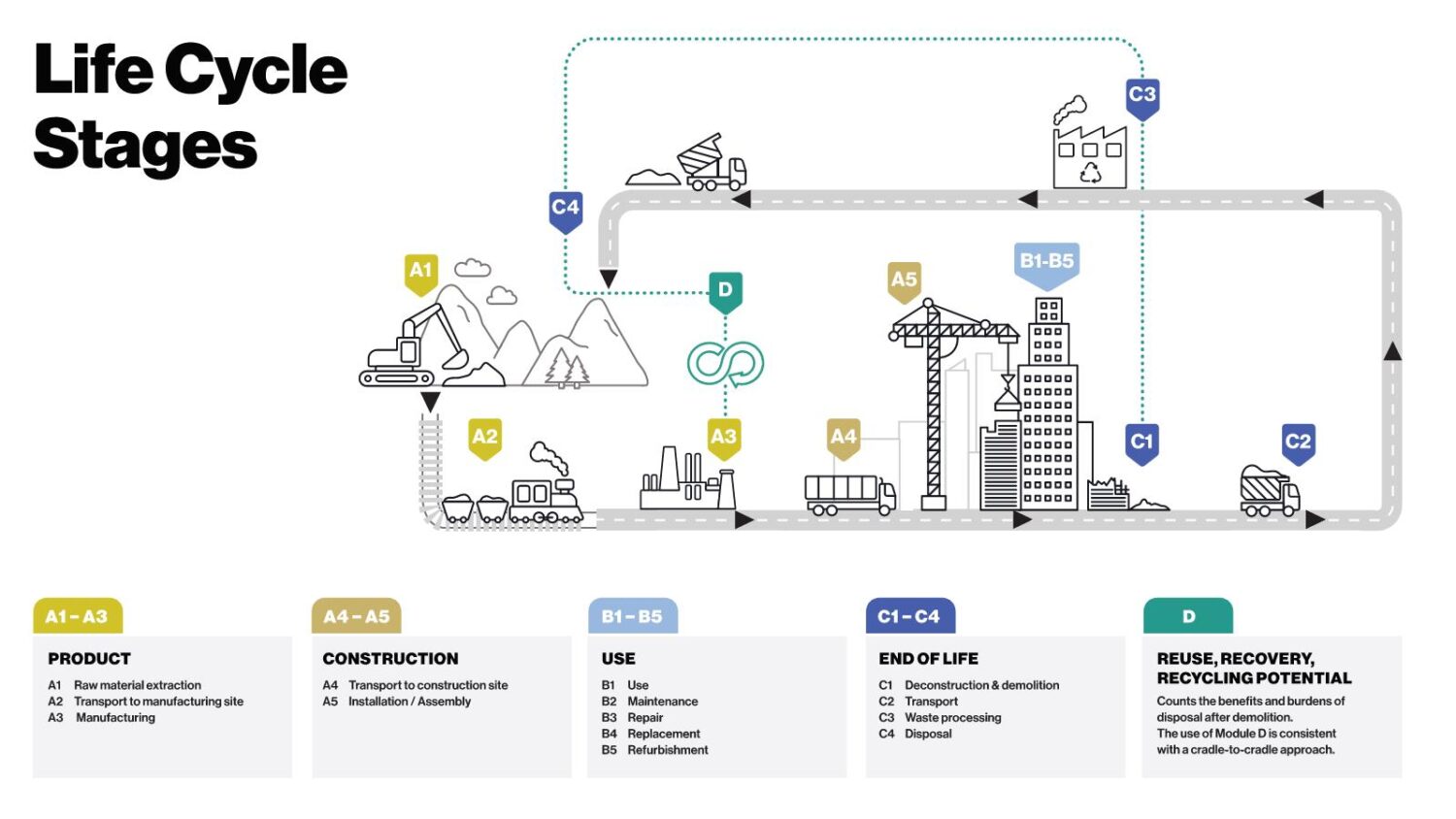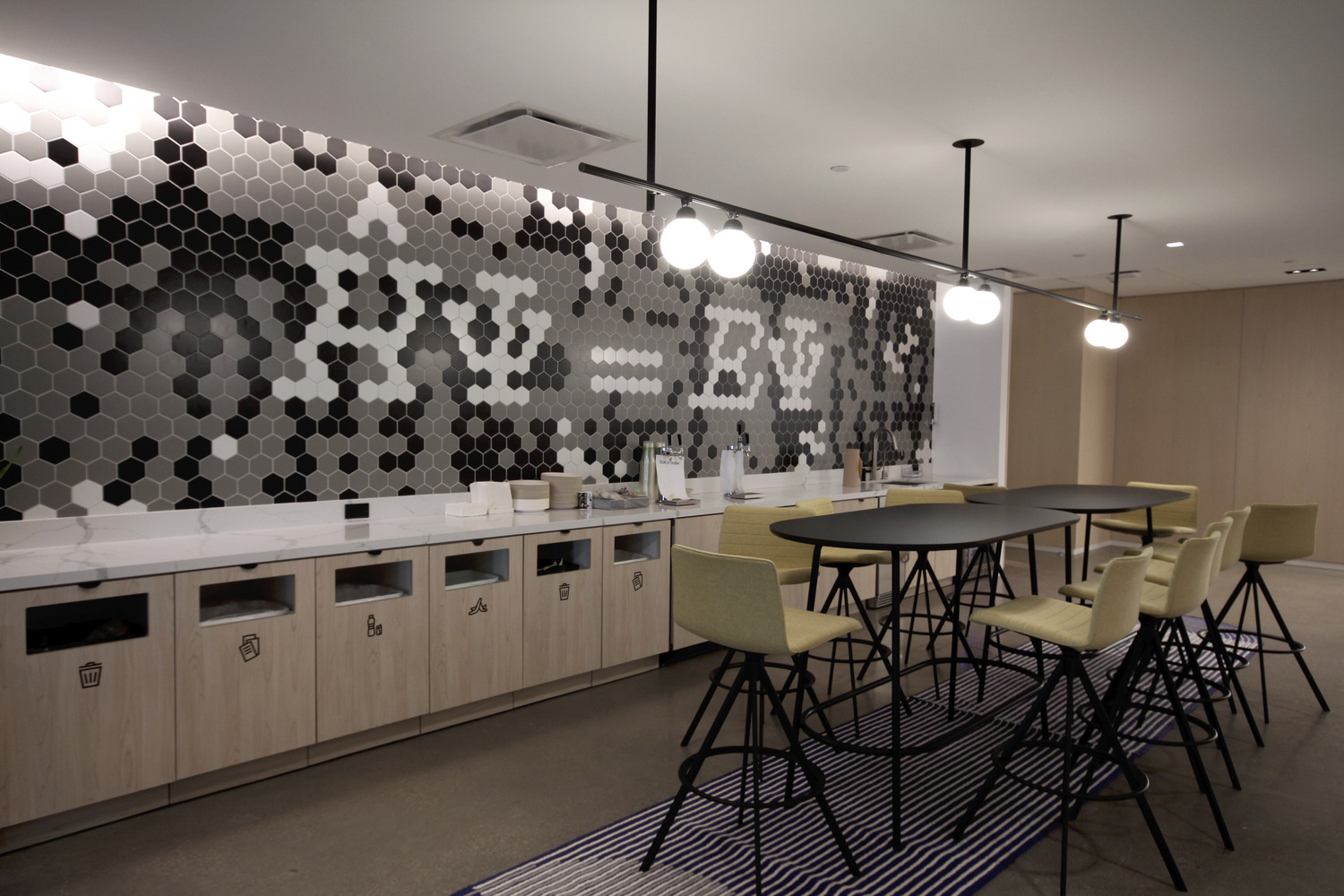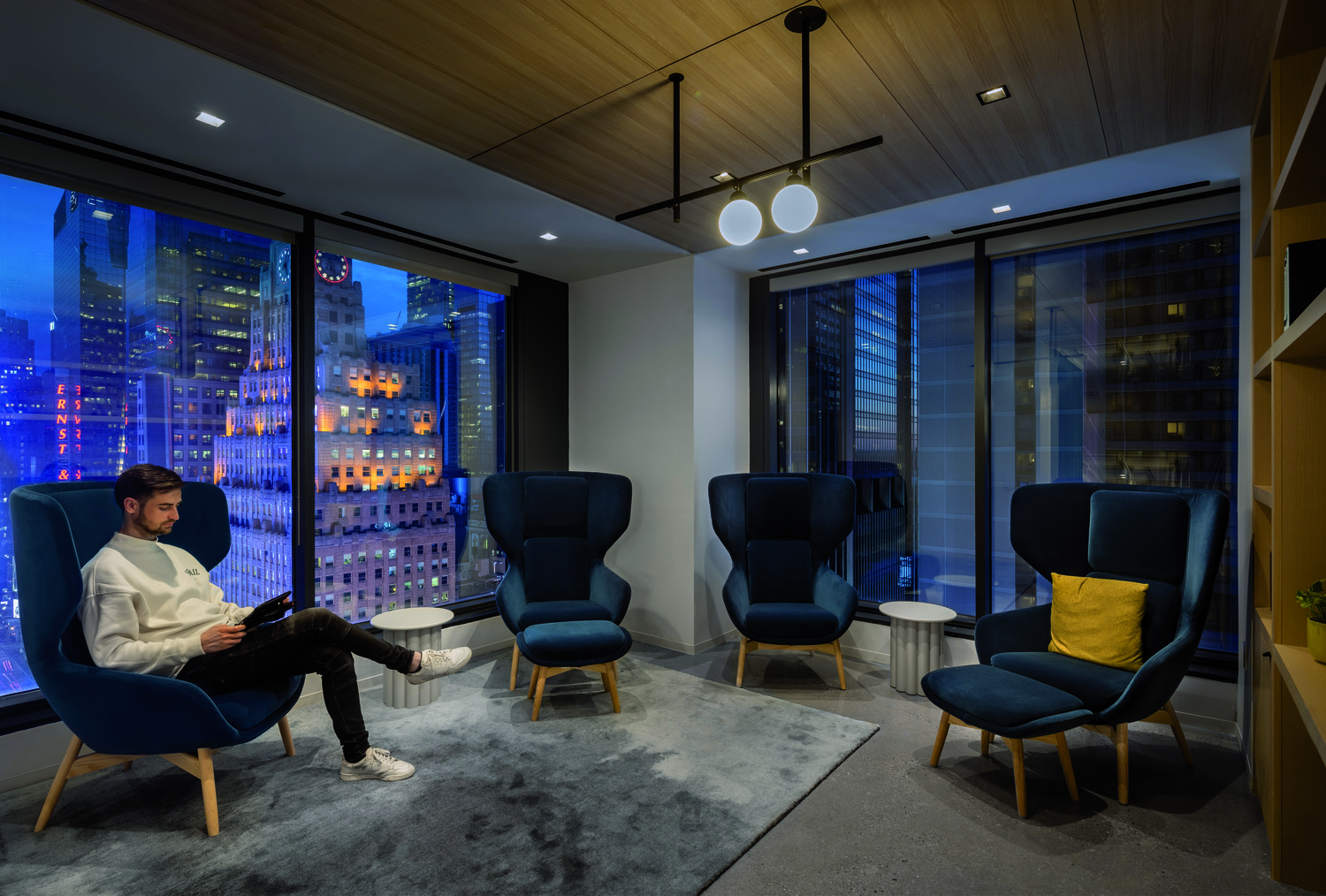Embodied Carbon in New York City
by Katia Lucuy, Sustainability Analyst and LCA Specialist, BEYOND and Jonce Walker, Principal and Global Director, BEYOND
Understanding Its Role in Our Buildings & Impact on Climate
Towering skyscrapers and expansive urban landscapes shape how we live, work, and play –– particularly in New York City. As we continue to urbanize, the construction industry has unwittingly woven a carbon legacy into the fabric of our built environment—one which carries profound implications for our planet’s future. While its impact is beginning to come to light, embodied carbon remains a crucial, often untold story of greenhouse gas emissions concealed within the building industry. Demystifying embodied carbon’s contributions towards climate change and reshaping building practices to mitigate the hazards threatening our planet are essential steps towards mitigating the effects of a warming planet.

Life Cycle Stages Diagram, created by BEYOND
Understanding Embodied Carbon
Embodied carbon encompasses all greenhouse gas emissions generated throughout a building’s entire life cycle. It begins with the excavation of materials like limestone, clay, and other minerals, continues through manufacturing, transportation, and construction. Representing the comprehensive lifetime emissions of a building from cradle to grave, embodied carbon assessment even extends to the structure’s eventual deconstruction. The concept of emissions at this scale can be challenging to grasp, but it’s essential to understanding how embodied carbon accumulates and contributes to the global emergency of climate change.
Picture your new building as a car with a smoky exhaust, but here, “exhaust” is emitted even before you “start the engine,” e.g. move into the building. This concealed carbon pollution can be just as detrimental as the emissions from the energy your building consumes once it’s operational. So, practitioners need to expand their attention beyond how a building functions, to also focus on how it’s conceived and built.
Seemingly innocuous materials like concrete, carpets, and gypsum board play a major role in how carbon begins to add up, particularly due to their near-universal prevalence within the construction industry. Concrete releases significant carbon dioxide during its manufacturing process. Carpets, often made from synthetic fibers, require energy-intensive production methods. Gypsum board originates from mined gypsum rock that uses high-temperature calcination during production.
While these materials are often cost-effective for large-scale buildings, the environmental impact of their production and sourcing don’t correlate with their lifecycle price tags. Given that construction is accountable for a staggering 23% of global greenhouse gas emissions, the use of these materials translates to a substantial emissions record of 15% of global greenhouse gasses combined! These figures are stark reminders design decisions and material selection contribute significantly to embodied carbon.
To better frame the concept of “decarbonization,” we need to distinguish two kinds of carbon emissions: operational carbon and embodied carbon. Operational carbon is defined as the greenhouse gas emissions associated with the operation of a building, including use, management, and maintenance. Embodied carbon, as defined above, involves the greenhouse gas emissions associated with raw material extraction manufacturing and processing, transportation, and installation of all building materials.
Addressing Embodied Carbon: At the Policy Level
In our quest to combat climate change, understanding and reducing embodied carbon, in addition to operational carbon, is a critical step in meeting our climate goals. New York City, a place where the skyline and innovation are both constantly evolving, has emerged as a global leader in addressing the issue of embodied carbon. In 2022, the Mayor issued Executive Order 23, calling for significant climate action from the city’s construction industry. The order serves as a potential prologue to an extraordinary effort in sustainability to decarbonize our buildings by focusing on the carbon in the materials that create them.
New York City’s Mayor acknowledges that cities, when they embrace sustainability, have the potential to slash a remarkable 40% of global pollution, with the ultimate goal of limiting global warming to 1.5 degrees Celsius. Moreover, the Mayor recognizes that climate action extends beyond environmental stewardship; it also encompasses addressing societal issues like wealth inequality, affordable housing, public transit access, and infrastructure revitalization—a harmonious dance where everyone’s participation is encouraged.
The stage is set, and the Mayor outlines an action plan—a concrete (pun intended) roadmap to achieving carbon neutrality by 2050. City agencies are poised to lead the way, championing low-embodied carbon and clean construction practices. By early October 2023, those public agencies were required to develop plans addressing embodied carbon, which we look forward to seeing once released.
Addressing Embodied Carbon: At the Project Level
Many projects tout their “green” credentials, but are they enough? Do they effectively counterbalance the less “green” elements? The only way to know definitively and gauge the industry’s progress is by employing tools that enable us to measure our results. Life Cycle Assessments, which encompass Global Warming Potential (GWP) inclusive of embodied carbon, have become a yardstick. GWP measures the heat-trapping capacity of greenhouse gasses relative to carbon dioxide.
Through HLW’s experience in measuring GWP in interior fit-out projects and devising strategies to mitigate it, we have identified key factors capable of delivering a 10-20% reduction in embodied carbon. These measurements are derived from a baseline set of industry averages encompassing all available Environmental Product Declarations (EPDs) for different types of products, as published by the Carbon Leadership Forum. Significant reductions (exceeding 30%) often feature the reuse of major components or the procurement of repurposed elements like access flooring. Such practices have traditionally been more common in the UK, but have enabled clients to attain ambitious sustainability objectives.
In instances where total reuse isn’t a viable option, the first step in achieving substantial reductions in embodied carbon is to identify the project’s three largest-by-volume components. These will often include carpet floorings, Type X gypsum board, acoustic insulation, and acoustic ceiling panels. HLW conducts rigorous research into available market options, evaluating factors such as transparency documentation, manufacturing location, and cost. Our findings lead us to propose realistic, project-specific alternatives tailored to each unique scenario.

HLW project: Schrodinger Floors 24-25th
Image by Pavel Bendov / ArchExplorer

HLW project: Schrodinger Floors 24-25th
Image by Pavel Bendov / ArchExplorer

HLW project: Schrodinger Floors 24-25th
Image by Pavel Bendov / ArchExplorer
Concepts in Action: Case Studies
Executive Order 23 specifically addresses an important, major player—concrete. The BEYOND team’s embodied carbon assessment efforts, however, look beyond a single material or building to consider the comprehensive impacts of interior fit-out projects. In New York City, the square footage of retrofitted interior spaces often surpass the square footage of new buildings, especially when you factor in the number of times a building and its interiors will undergo renovation during its lifetime. HLW’s iconic One Times Square in Manhattan, for instance, was completed in 1904 and still stands today as a commercial tower. Yet, it has been redesigned and renovated at least half a dozen times, and many of its original details have since been removed and replaced. The amount of raw materials utilized and waste generated over the years cannot be understated, exemplifying how the environmental footprint of a building’s interiors over the course of its life cycle in a metropolis like New York can easily rival or surpass that of new construction. The below projects exemplify these allegations.
Schrödinger NYC, located in the heart of Times Square, is a great example of sustainability in interior design. This project achieved a remarkable 55% reduction, primarily attributed to the often-overlooked hero, the carpet backing. The journey to this achievement involved a series of insightful conversations with the manufacturer and their sustainability team, where we meticulously examined various backing options, committed to preserving the project’s aesthetic expectations. Other important elements include reuse of furniture, as well as sustainable gypsum board and insulation. During construction, we actively engaged the contractor, ensuring they not only understood but also embraced our embodied carbon goals.
Another staggering project is the 43rd and 44th floors of 225 Liberty Street owned by Brookfield Properties. This interior project achieved an impressive 38% reduction from the baseline. The achievement was made possible through the reuse of major elements, particularly the flooring. To minimize environmental impact, the existing concrete floor was retained, eliminating the need for new finishes. Instead, the floor was polished, and an environmentally friendly sealer was applied after thorough consultation with sustainability experts.
These decisions are not merely eco-conscious gestures; reducing embodied carbon in construction is a smart investment with enduring benefits. It translates into substantial cost savings over a building’s life cycle, owing to reduced energy consumption and maintenance outlays. Furthermore, it aligns with environmental sustainability goals, contributing to the fight against climate change and decreasing a building’s carbon footprint for future generations.
Emphasizing lower embodied carbon can also lead to superior building performance. Enhanced insulation, intelligent design, and sustainable materials culminate in improved energy efficiency and indoor comfort, not to mention cost savings. Less is more. It doesn’t just benefit the environment; it elevates occupants’ quality of life, enhancing satisfaction and well-being within these spaces. Ultimately, the reduction of embodied carbon paves the way for constructing buildings that are not only economically sound but also environmentally responsible, ensuring co-benefits to the users, the owner, and the planet.
While NYC agencies are mandated to specify low-carbon concrete and run a Life Cycle Assessment (LCA), it remains imperative that designers, architects, manufacturers, and contractors continue to chart the path toward a more carbon lean construction industry. It’s a collective effort, engaging multiple stakeholders and encompassing various phases and empowering people to raise their hands to demand better. Fortunately, the industry and the client’s requirements are moving in the right direction. The widespread adoption of EPDs, the continual release of LCA tools, and the commitment of leading corporations to ESG principles are course-correcting a path towards decarbonization in the built environment.
About BEYOND and HLW
HLW is a more than century-old architecture firm that has weathered wars, pandemics, and the rise of New York. In 2020, the firm formed BEYOND, a team committed to advancing sustainability and wellness in the built environment that transcend ratings systems and certifications. The work of BEYOND emphasizes pioneering innovative and measurable approaches to align the industry with broader Environmental, Social, and Governance (ESG) goals. On the case studies shown above, the team adopted cutting-edge software tools to develop embodied carbon assessments to bring a more critical lens to the firm’s design choices.
To find out more about BEYOND, visit: https://www.gobeyondwithus.com/